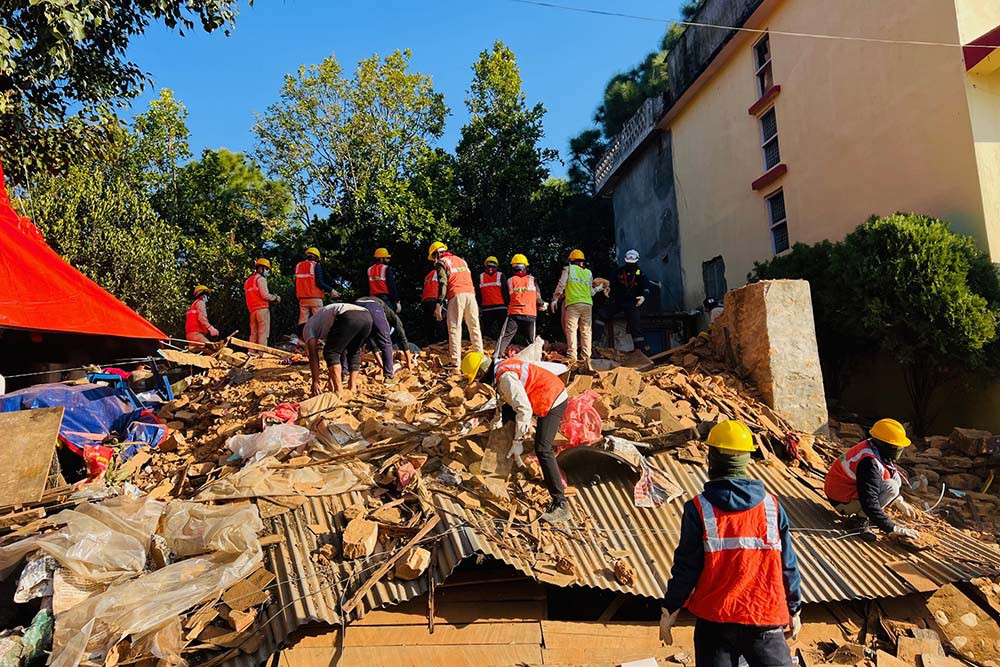
While the government has various plans in the pipeline for the aviation industry, the ground reality is that 16 already existing domestic airports have remained out of operation for several years turning them into grass fields.
Text by Ankita Jain
According to ‘Civil Aviation Annual Report’ published by the Civil Aviation Authority of Nepal, out of the 49 airports in the country 16 that have been shut down for more than a decade are Baitadi, Langtang, Bajhang, Manang (Humde), Darchula, Meghauli, Dhorpatan, Mahendranagar, Dolpa Masinechaur, Palungtar, Doti, Rolpa, Jiri, Syangboche, Kangel danda and Tikapur airports.
“These airports were constructed without proper research. Many of them were built in places which witness negligible tourist flow. Either the places should have some tourist attractions to serve the purpose or the locals should be rich enough to use air transport,” says Ganesh Bahadur Chand, Deputy Managing Director, Nepal Airlines Corporation.
As per CAAN, most domestic airports have suspended their services due to shortage of passengers. Some of the domestic airports were even closed right after the test flights were conducted with a number of them suspending operations after launching their services for a few months. Among these, four airports: Dang, Sanfebagar, Balewa, and Rajbiraj - resumed services in 2018 after assurance of traffic from the respective local governments. However, two of them - Balewa and Rajbiraj airports - have been shut down again due to lack of passengers.

Raj Kumar Chhetri
Former General Manager, TIA
“Despite these results, CAAN is constructing six new domestic airports at Arghakhanchi, Gulmi, Ilam, Kalikot, Kamal Bazar (Achham) and Khiji Chandeswori (Okhaldhunga),” informs Chand. Likewise, the budget for the next fiscal year has allocated funds to conduct a feasibility study to construct a domestic airport in Surkhet. Budget has also been allocated to upgrade Biratnagar, Janakpur, Simara, Dang and Dhangadhi airports.
Among the four hub airports — Bhairahawa, Biratnagar, Nepalgunj, and Pokhara — the latter two are being upgraded to regional international airports, while the construction of Gautam Buddha International Airport (GBIA) is in its final phase. The airports are being constructed to minimise air traffic of the only international airport Tribhuvan International Airport (TIA). “Nijgadh airport will take another 10 years before operation. Lumbini will start operating in 6-8 months and Pokhara will take a minimum of two years. Though Pokhara Airport won’t affect Kathmandu airport because of its geographical constraints but after the full-fledged operation of GBIA, I believe 25-30% traffic will diverse from Kathmandu to Lumbini,” says Raj Kumar Chhetri, former General Manager of TIA.

Prakash Sedhain
Operational Director, Manang Air
On the issue of the registration of TIA as the world’s first boutique airport, Chhetri says, “This is a rumour which has spread across the nation. We aren’t registering TIA as a boutique airport. Rather the PM will officially inaugurate TIA on January 1, 2020 when the renovation is completed.” Defining a boutique airport, he shares, “We want TIA to reflect our culture and identity in the simplest way possible complemented by modern technologies.” Contrarily Chand says, “I have no idea about the boutique concept. Placing a canopy doesn’t signify the boutique experience.”
The TIA project has been divided into different phases for which the government has allocated around Rs 300 million. According to Chhetri, the major work includes installation of canopy which will cost approximately Rs 16 crores; interior revamping at both the international and domestic terminals at an estimated cost of Rs 14 crores; an eight feet Buddha statue installation with base at Rs 70 lakhs; building a garden and more. “Except for the canopy structure, everything will be completed within five months. The canopy installation will be ready by mid-2020,” he informs.

Ganesh Bahadur Chand
Deputy Managing Director, Nepal Airlines Corporation
The developments at TIA have not gone unnoticed by travellers. “TIA looks much better now in comparison to the earlier days. New tiles have been placed, wood carving is being carried out and the parking space seems less congested now,” says Ayush Shakya, a frequent flyer. However, a lot of the most basic requirements such as clean toilets, adequate lighting and seating areas, proper ventilation, way finding signages, and staff efficiency are yet to be addressed. Understandably, these issues, repeatedly, make it to the social media feed of the disgruntled travellers.
To make TIA aesthetically appealing, the management is also working on making the airport an advertisement-free zone. “There are a few pending due to previous contracts. However, we have successfully removed 80% of the advertisements and the rest will also be removed as early as possible,” Chhetri shares. With no advertisement, the TIA management loses Rs five crores in revenue but Chhetri had introduced a new way to promote brands at the airport during his tenure. “We planned advertisements on digital bill boards which keeps changing after certain seconds,” he shares.
The CAAN report has claimed that the country’s aviation sector showed marked improvement in 2018 compared to previous years. “Every year, we forecast a growth of 7%. Though this year we are witnessing a little downfall in the numbers, we are expecting an increase in footfall in the next three months,” Chhetri informs.
“More than 40,000 tourists visit Nepal for Everest expedition. But this year we are yet to witness those numbers. One of the main reasons is the weather conditions because of which Lukla is often shut for weeks,” says Captain Prakash Sedhain, Operational Director, Manang Air. Sedhain has been working in rescue operations for Everest Base Camp, Annapurna Camp and other areas for the past five years with Manang Air. He says global warming has hugely impacted tourist schedules.
Talking about Nepal’s tourism potential and capacity, Sedhain says, “Only 10 lakh tourists come here yearly despite our capacity to host a larger number. Take a look at Tibet, it serves more than two crore tourists annually.”
As per the report, there are currently 28 paved (blacktop)airports, while the runways of six are being paved, nine are yet unpaved airports in operation. Similarly, a total of seven airports — Tribhuvan International Airport, Biratnagar, Chandragadi, Dhangadhi, GBIA, Nepalgunj, and Simara have night operation facilities. “Before I joined the TIA, the airport was functioning 18 hours only. During my tenure, we added three more hours and made it 21 hours,” Chhetri informs. He further shared that there are plans to operate TIA 24 hours from December 31, 2019. “We will be able to run TIA 24 hours by the end of this year. Similarly, we will evaluate the number of airlines which will be operating after midnight to 6am. If even 8-10 flights operate during that hour, we will continue operating 24 hours,” he shares.
Chhetri also reveals that the civil aviation generates Rs 700 crores in profit annually out of TIA inclusive of parking charges. “These charges are governed by civil aviation and are quite reasonable in comparison to fuel and ground handling charges,” he says. According to sources, NAC charges USD 3000 per flight for ground handling and generates Rs 300 crore every year only out of ground handling services at TIA.





